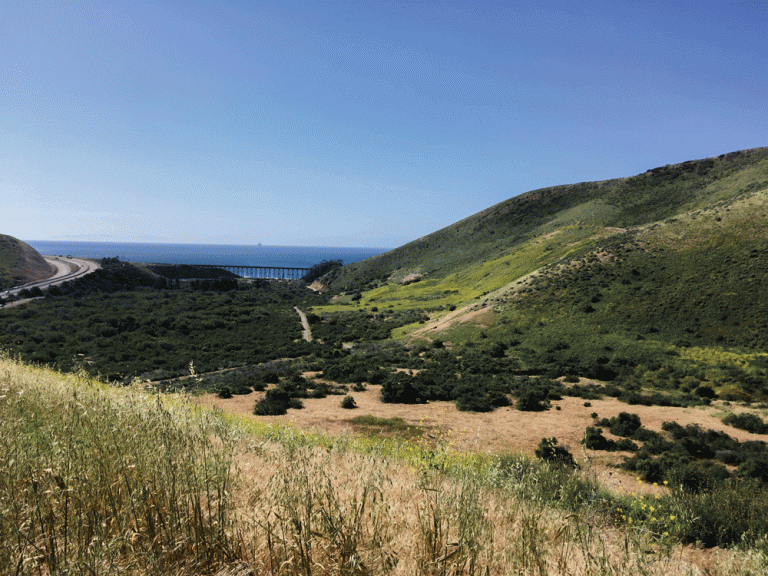
Rishika Kenkre
Staff Writer
The U.S. Forest Service has thrown out the plan for the construction of a six mile and 300 feet-wide fuel break going through the Gaviota Coast as a result of a lawsuit.
Two environmental agencies, the California Chaparral Institute and Los Padres ForestWatch, argued that the plan had the potential to destroy the habitat of scarce chaparral species. Therefore, the Forest Service will not continue with the construction of a fuel break.
According to Green of the U.S. Forestry Service website, a fuel break is defined as a method of reducing the flammability of highly flammable vegetation to a lower flammability. In essence, it is a method used in forest environments to alleviate the impact of the threat of wildfire through the cutting of vegetation.
According to Noozhawk, the California Chaparral Institute and Los Padres ForestWatch found that the potential fuel break stretching from the Refugio Pass to Gaviota Peak can potentially put the environment of Refugio Manzanita at risk.
The Manzanita is a plant that is native only to the Santa Ynez Mountains, according to Laspilitas. The plan of making the fuel break did not discuss how to take care of this precarious situation, and this point of contention stopped the fuel break in the Santa Ynez Mountains.
In December, Earthrise Law Center, acting as representatives of the California Chaparral Institute and Santa Barbara’s Los Padres ForestWatch, filed a lawsuit stating that this development harms the species within the region and violates environmental protection and management legislation.
In the Los Padres Forest Watch website, it states that, “Our lawsuit alleges that the fuel break violates the National Environmental Policy Act and the National Forest Management Act, two of our nation’s bedrock environmental protection laws. The Forest Service approved the project without preparing an Environmental Assessment, and without proposing any measures to protect manzanitas and other rare plants and animals in the area.”
Noozhawk stated that the fuel-break would continue to other parts of the local mountain, including communities such as Painted Cave and Rosario Park. The potential for community destruction is a large consequence, given the project had a low score of 82 in terms of priority out of 163 Forests.
“The science is clear,” Richard Halsey, the director of the California Chaparral Institute, said in a press release. “The Forest Service needs to focus its fire prevention efforts directly within and around communities at risk, not in faraway locations known for their spectacular natural beauty.”
Andrew Madsen, a Forest Service spokesman, told Noozhawk that fuel breaks have gone on for decades throughout the Los Padres National Forests and experts working in collaboration with the Forest Service use their findings to help out firefighters.
Los Padres ForestWatch released a statement stating that, “We appreciate the Forest Service’s decision to reconsider this flawed project, and we will continue to assist forest officials in identifying and implementing proven, cost-effective ways to directly protect homes from wildfire.”
The U.S. Forest Service decided to reconsider the plans and find other means to prevent forests fires from occurring. This includes buildings made up of flame-retardant materials, double-pane glass, and screening.
The window is the weakest part of a home in the context of wildfires, as it can easily break from radiant energy. The double-pane of a window can add protection to the window from the heat of the fire.
As a result of the arguments made by the environmental agencies and the alternative methods in place, the U.S. Forest Service won’t continue its fuel break installation.
This case demonstrates the tensions between the protection of the environment and the populations with the sustenance of a rare species, endemic to the Santa Ynez Mountains.

















I wonder about this…. So the firebreak is going to “destroy the habitat of scarce chaparral species”. Wouldn’t it serve the other purpose? Wouldn’t the firebreak actually help save the species by potentially stopping the fire before it annihilates the entire ridge-line?
Comments are closed.